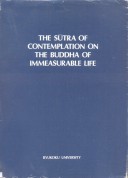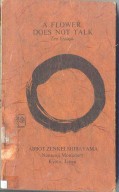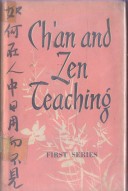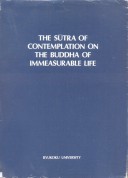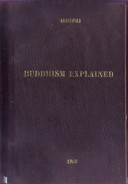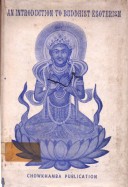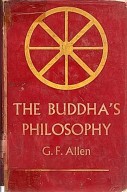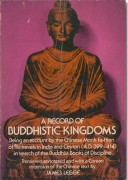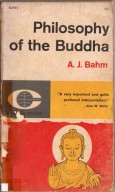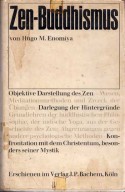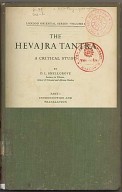Tìm Sách
Sách tiếng Anh-English >> The Buddha’s Law Among The Birds
Thông tin tra cứu
- Tên sách : The Buddha’s Law Among The Birds
- Tác giả : Edward Conze
- Dịch giả :
- Ngôn ngữ : Anh
- Số trang : 65
- Nhà xuất bản : Bruno Cassirer-Oxford
- Năm xuất bản :
- Phân loại : Sách tiếng Anh-English
- MCB : 1210000006202
- OPAC :
- Tóm tắt :
Translation and commentary by Edward Conze ; with a preface by J. Bacot
PREFACE
The Western reader of this book, even if well versed in the literature of Buddhism, may still find it somewhat difficult to overcome his preconceived ideas regarding the animal world. In Europe a wide gulf separates man from even the most advanced species of animals, and a poem about Buddhism among birds may well strike him as nothing more than a literary fantasy. In India, however, this gulf was never more than a very shallow depression which could apparently be crossed with little effort. Even to-day, in India, one can see animals, both domesticated and wild, living together with mankind in conditions of familiarity which the Westerner finds unusual and at times even touching. The Buddhist concept of universality is not confined to man alone. It is a total universality which extends to all living creatures both above and below him, and it is this totality which is of the very essence of the doctrine. Thus a Council of Birds would neither offend nor seem strange to orthodox believers. The text here presented is a pious work of the same kind as the variations on the themes of the Jatakas, in which the literature of Tibet has found the majority of its edifying topics.
It is to a human being that merit is due for the conversion of the birds. According to a famous Tibetan novel their spokesman was an unfortunate Indian prince, an Avatar of Avalokita, and the son of a king of Benares, who by accident became a cuckoo. His story is one of the most charming that has ever come out of the inexhaustible fund of Indian legends.
Appearances may well belie the difficulty of the translator’s task. In rendering the language which Tibetan Buddhists have put into the mouths of Himalayan birds whose habits, temperaments and sometimes even names are unknown to our ornithologists, he has faced greater problems than the arguments of more classical and more profound treatises would have presented. In consequence, if one encounters here and there an obscurity, we may perhaps attribute them in part to the mysteries inherent in the language of birds.
In Tibet, where printing is still comparatively little used, popular works are generally transmitted orally rather than by written record. Consequently they have remained little known to Western scholars. The rarity of copies of the Precious Garland, together with the originality of the subject, more than justify its publication. Here is an ingenious but eloquent testimony of the way in which the birds of the air came to share the disenchantment of mankind.
J. Bacot.
INTRODUCTION
The Tibetan text of this charming book was first published in Calcutta in 1904, a slim volume of 40 pages. Satis Chandra Vidyabhushana, the editor, does not tell us whether his text was based on oral recitation, a manuscript or a blockprint. My translation, although made directly from the Tibetan, owes a great deal to the French translation by Henriette Meyer, brought out in 1953 by the Cahiers du Sud, under the title Précicuse guirlande de la loi des oiseaux. In the present state of Tibetan studies it is, however, not surprising that my French colleague and I should differ on many points of detail.
The work is anonymous and undated. The particularities of the language seem to point to the 17th or 18th century. The birds are content with a simple exposition of the beliefs and attitudes common to all Buddhists, and they do not take sides in the disputes of the sects. The theme of the book has, however, marked affinities to some of the tenets of the Kahgyudpa, Bka’-brgyud-pa, sect, and the author may well have been some Kahgyudpa lama who was content to remain anonymous. The Tibetan title, Bya chos rin-chen ’phreit-ba, means literally, the Dharma among, the Birds, a precious garland’’.
Both language and ideas mark this as a popular book, a piece of folk literature, destined for peasants and nomadic herdsmen. More than many a learned treatise, it conveys to US the emotional overtones of the religion which has ruled Tibet for so long, and it gives us some idea of what it feels like to be a Buddhist. The style is simple, straightforward and unsophisticated. Only the barest minimum of Buddhist technical terms is used, and they should offer little difficulty to the reader.
The Dharma is here, without any scholastic complications, just the doctrine of the Buddha. The Three Treasures are the Buddha, the Dharma, and the Order of monks, i.e. the three basic objects of Buddhist faith and devotion. The samsaric world is a term for this universe of transient phenomena in which we wander about so senselessly, and it is the opposite to Nirvana, the true goal of our lives. State of Woe is a technical term for rebirth as an animal, in hell, or as a ghost. The Sanskrit is durgati. Although they are never far from a Buddhist’s mind, the States of Woe are mentioned here with great frequency for the simple reason that the persons of the play are in one of them. Muni and Jina are two common epithets of the Buddha. The first means Sage, and the second Victor, or Conqueror. Mara is the personification of the principle of evil, the Buddhist devil or Satan. Jambudvipa in this context just means India. Sometimes I have retained the more accurate rendering of wholesome for bde-ba (kusala), more often loosely translated as good. An act is wholesome if it brings merit, i.e. if it leads to greater happiness, either material or spiritual, in the future.
Although the translation aims at being faithful, I have tried, without adhering pedantically to the letter, to reproduce the spirit of the original and to convey the outlook on life of a people who have for centuries lived under the influence of Buddhist teachings. It will be interesting to see how Europeans will react to its message.
In the preparation of this work I owe a great deal to others. First of all I wish to express my gratitude to Professor J. Bacot, who has allowed us to reproduce here the Preface he wrote for the French translation. Mr. Peter Swann; of the Museum of Eastern Art in Oxford, has spared no pains to improve the diction of the translation. His name ought really to have appeared on the title page, .together with mine. This would have been only just, — but justice is rarely done in this world. Further, I must thank my friend, Dr. Erik Haarh, of the Royal Library of Copenhagen, for so readily sending me photos from the work on pharmacy, which seems not to be found anywhere else in Europe. In addition the Ven. Tri-Khong, Dr. Haarh, Dr. Eichhorn and Dr. Newesky de Woikowicz have made valuable suggestions regarding both text and illustrations. The Librarian of the London School of Oriental and African Studies has very kindly given us access to their copy of the extremely rare Ming encyclopedia. Part of the translation has previously appeared in the Middle Way, and I want to thank the editor for her permission to reprint it here.
London Edward Conze
January 1955
CONTENTS
Preface by Prof J. Bacot…………………7
Introduction…………………9
Translation…………………13
The Background of the Bya chos…………………49
Notes…………………63
 Facebook
Facebook
 Google
Google
 Google+
Google+

